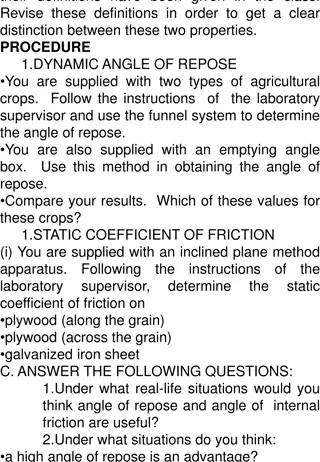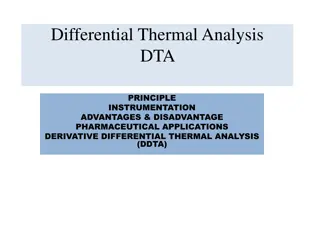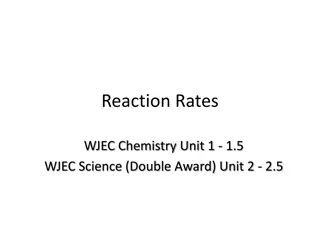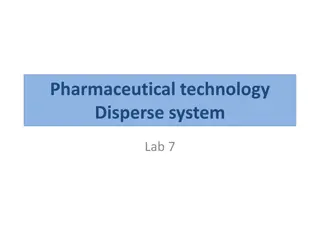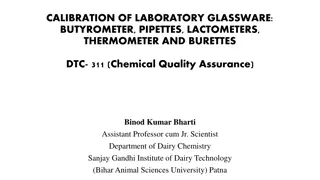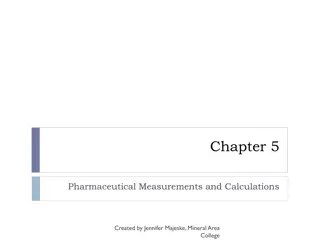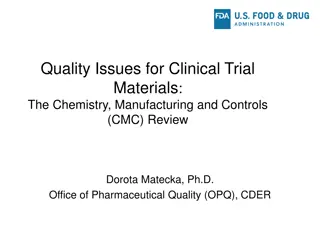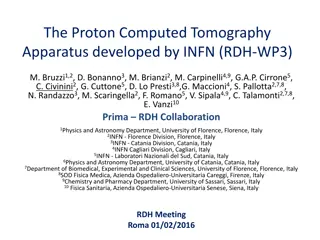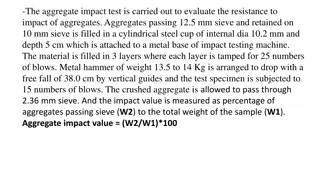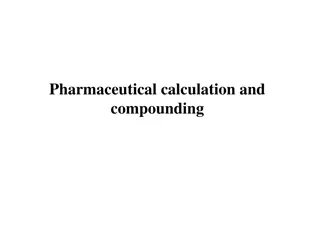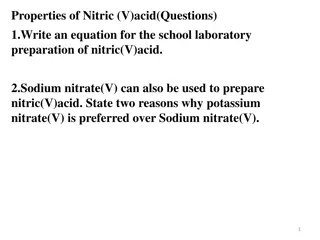Understanding Pharmaceutical Calculations and Laboratory Apparatus
Pharmaceutical preparations must be effective, safe, and accurate in both quantitative and qualitative aspects. This includes ensuring the accurate amount and identity of ingredients. Laboratory apparatus such as mortar and pestle, wide mouth bottles, cylindrical and conical measure cylinders, and conical flasks are essential tools for preparing and measuring pharmaceutical substances. These instruments aid in calibrating, measuring, and storing ingredients accurately to guarantee the quality of pharmaceutical products.
Download Presentation

Please find below an Image/Link to download the presentation.
The content on the website is provided AS IS for your information and personal use only. It may not be sold, licensed, or shared on other websites without obtaining consent from the author. Download presentation by click this link. If you encounter any issues during the download, it is possible that the publisher has removed the file from their server.
E N D
Presentation Transcript
Pharmaceutical calculation Lab 1 Laboratory apparatus
The pharmaceutical preparation, as the final forms used for The pharmaceutical preparation, as the final forms used for medication, must be medication, must be effective effective and quantitatively quantitatively and and qualitatively qualitatively. . and safe safe. It should be accurate . It should be accurate
Quantitatively: It means the amount (wt or vol.) of the ingredient be accurate. 1 Qualitatively: It means the identity of the ingredient be certain. 2
Instrument used in the lab . Mortar and pestle Mortar and pestle are implements used since ancient times to prepare ingredients or substances by crushing and grinding them into a fine paste or powder
Instrument used in the lab . Wide mouth bottle are easier to fill and are recommended for the storage of solid, semi-solid and viscous liquid materials.
Instrument used in the lab . Cylindrical measure cylinder a relatively slim glass or plastic cylinder used specifically for calibrating beakers or measuring a liquid's volume. Graduated cylinders come in a variety of sizes such as 10 ml, 25 ml, 50 ml, 100 ml, 500 ml and 1,000 ml. Scientists take measurements by viewing, at eye-level, the lowest point of the convex dip that the liquid in the cylinder makes.
Instrument used in the lab . Conical measure cylinder is a type of laboratory glassware which consists of a conical cup with a notch on the top to allow for the easy pouring of liquids, and graduated markings on the side to allow easy and accurate measurement of volumes of liquid.
Instrument used in the lab . Conical flask This shape allows the flask to be sealed with a bung for heating purposes, while also allowing a researcher the freedom to shake or stir the flask without spilling liquid. The Erlenmeyer flask has diverse uses such as holding and measuring chemical liquid samples, but can also be used to mix, heat and boil chemicals.
Instrument used in the lab . Volumetric flask (measuring flask or graduated flask) is a piece of laboratory apparatus, a type of laboratory flask, calibrated to contain a precise volume at a particular temperature. Volumetric flasks are used for precise dilutions and preparation of standard solutions.
Instrument used in the lab . Filter paper Used for separation of different materials , especially the soluble from the non soluble ones
Instrument used in the lab . Thermometer Used to measure the temperature of the solutions , or work conditions
Instrument used in the lab . Pipette A pipet transfers relatively small amounts of liquid. In the most commonly used pipettes, experimenters draw liquid into one end of a glass or plastic cylinder by the prior squeezing of the rubber or plastic ball at the opposite end. The amount of liquid able to be drawn into the pipette is usually fixed, to enable accuracy in measurement.
Instrument used in the lab . Watch glass a circular concave piece of glass used in chemistry as a surface to evaporate a liquid, to hold solids while being weighed, for heating a small amount of substance and as a cover for a beaker.
Instrument used in the lab . Slab and spatula Used for incorporation of drugs into creams, ointments or preparations of ointment bases or cream base
Instrument used in the lab . Test tube They are designed to hold small quantities of chemicals and feature a flared lip to make pouring easier. Test tubes can hold liquid or solid chemicals and can be used to contain small chemical reactions. The slimness of the test tube reduces the spread of any vapors that may be produced by the reaction.
Instrument used in the lab . Funnel tube or pipe that is wide at the top and narrow at the bottom, used for guiding liquid or powder into a small opening.
Instrument used in the lab . Beaker A beaker is a cylindrical glass or plastic vessel used for holding liquids. It is a multi-purpose piece of equipment used for containing a chemical reaction, measuring liquids, heating them over a Bunsen burner's flame or collecting them in a titration experiment.
Instrument used in the lab . Balance A balance determines the mass of something, such as a dry chemical.
Instrument used in the lab . Stirrer used to mix chemicals and liquids for laboratory purposes. They are usually made of solid glass, about the thickness and slightly longer than a drinking straw, with rounded ends.




